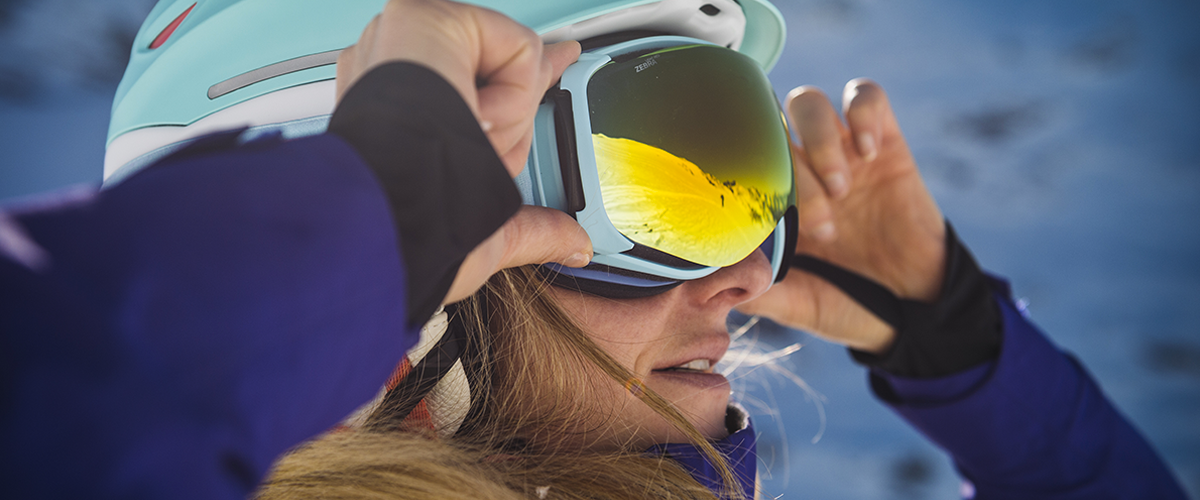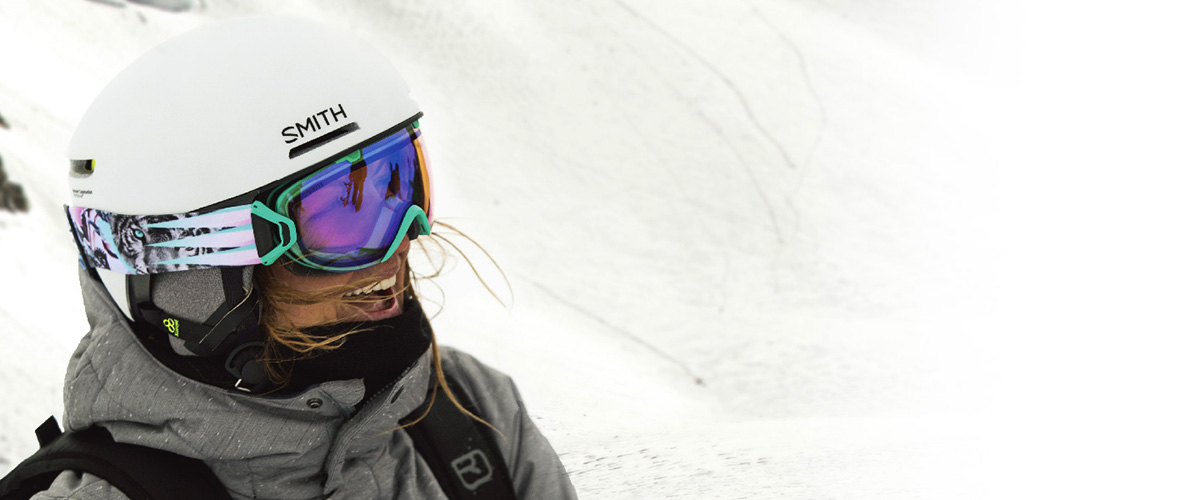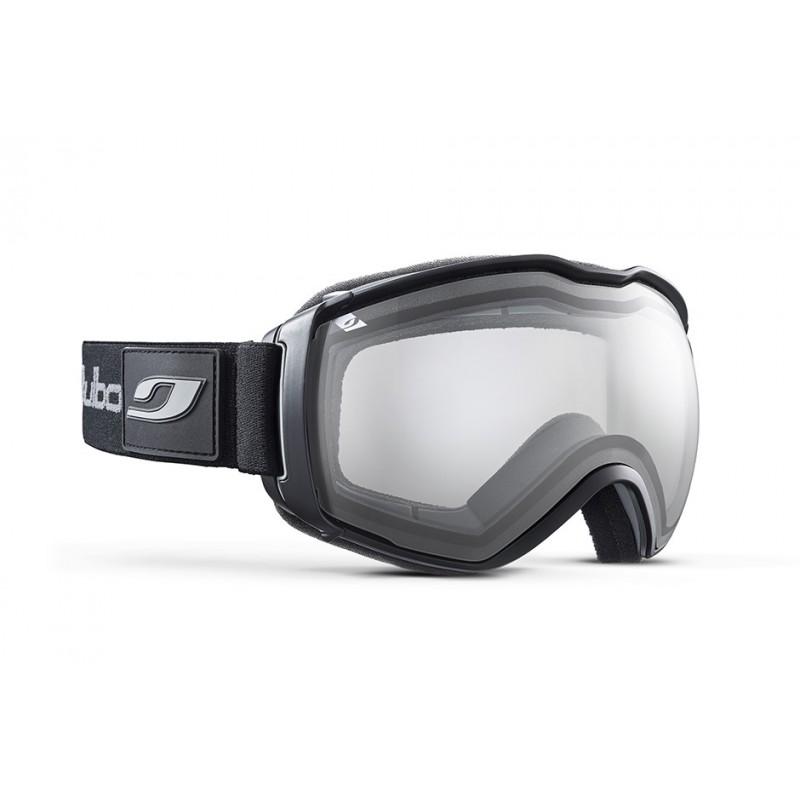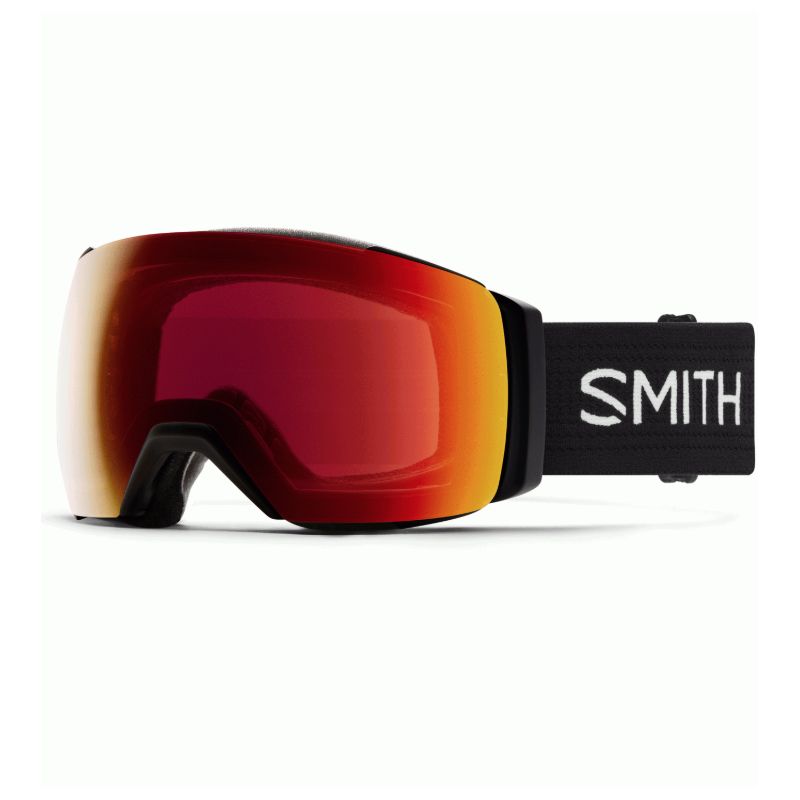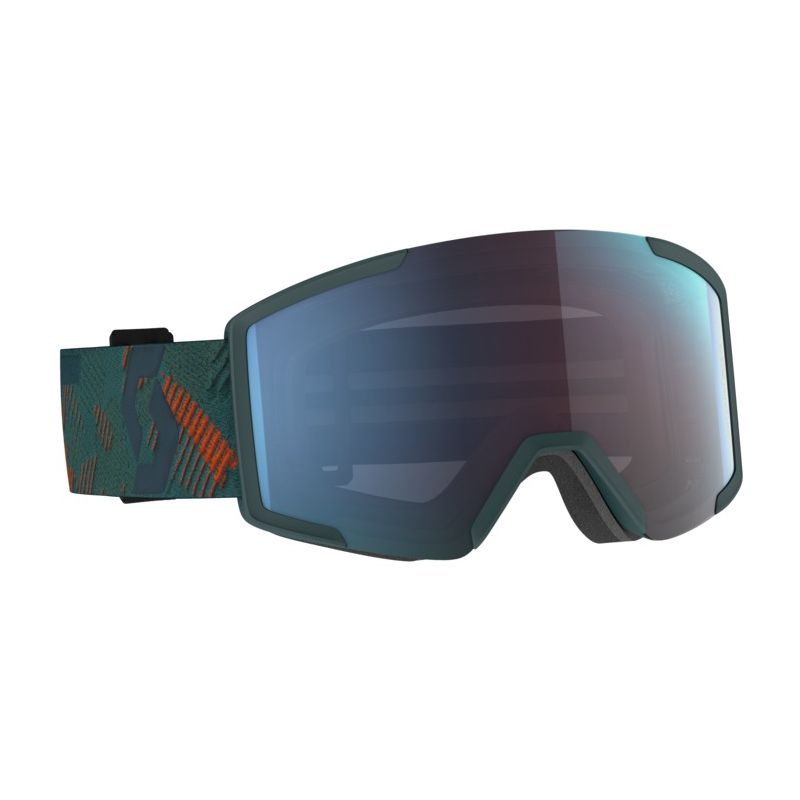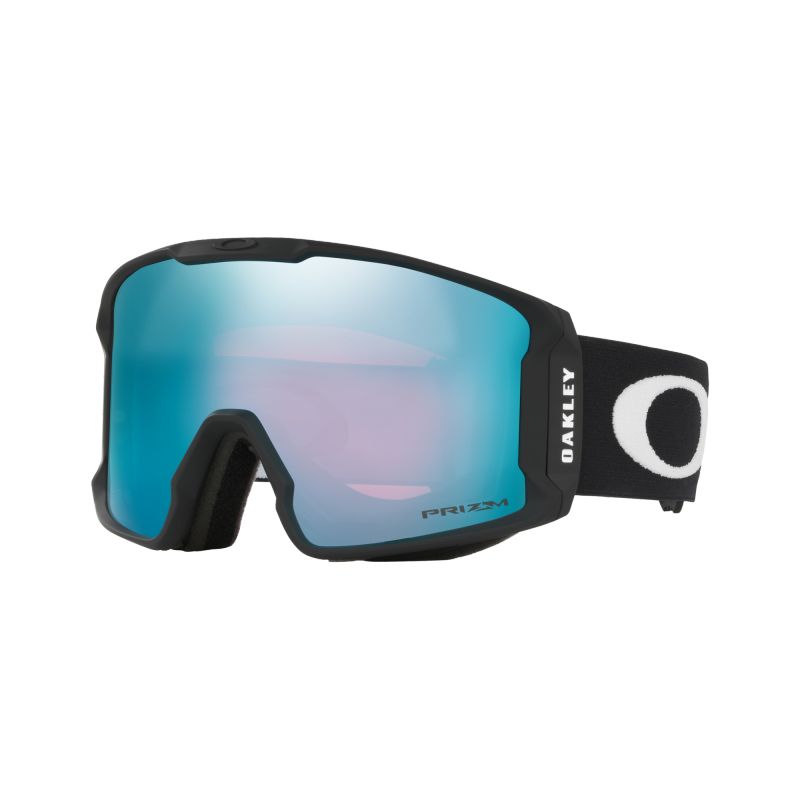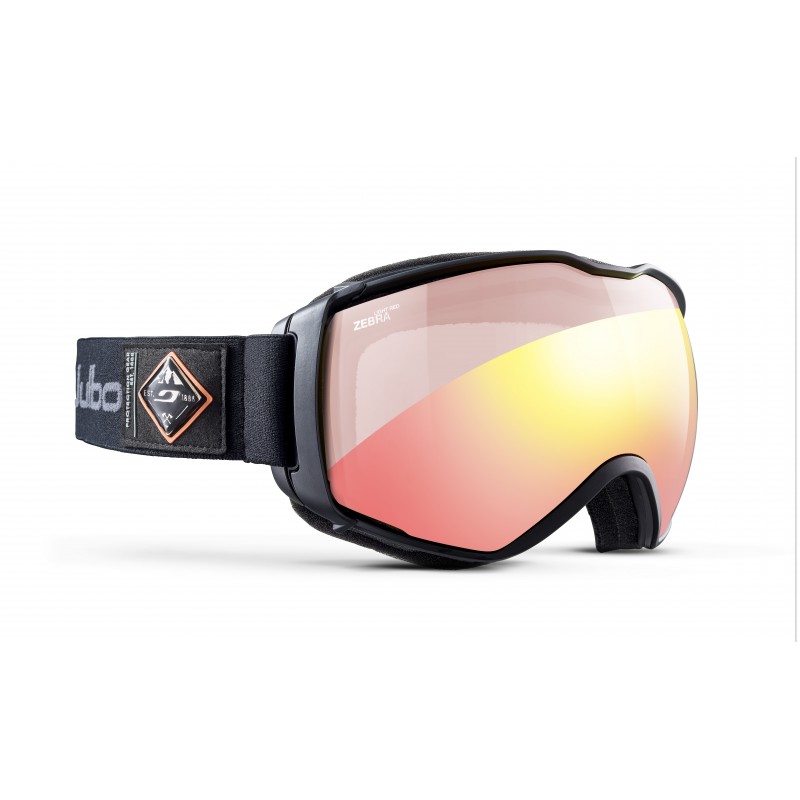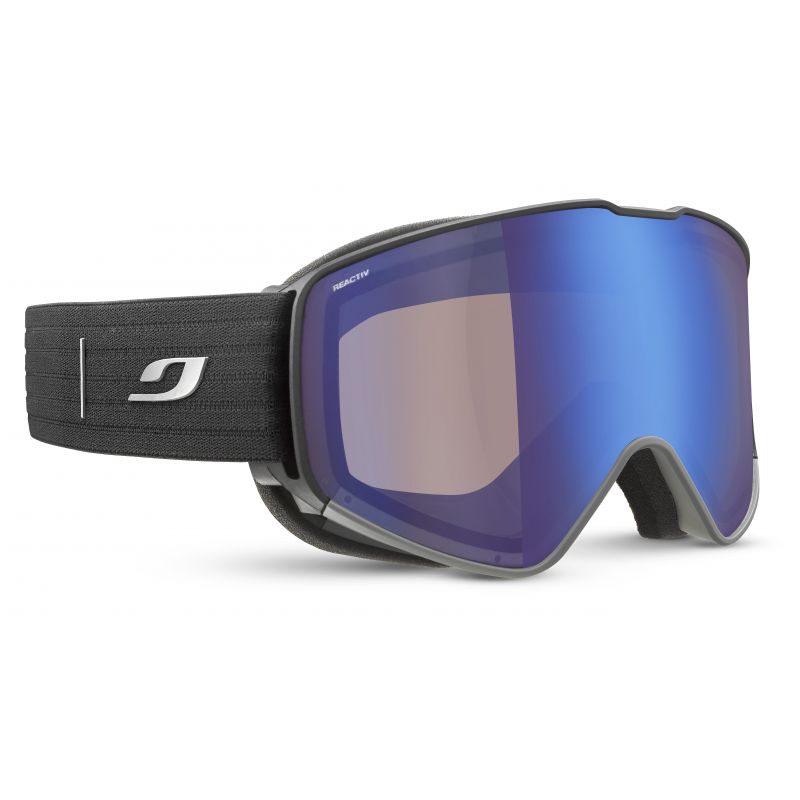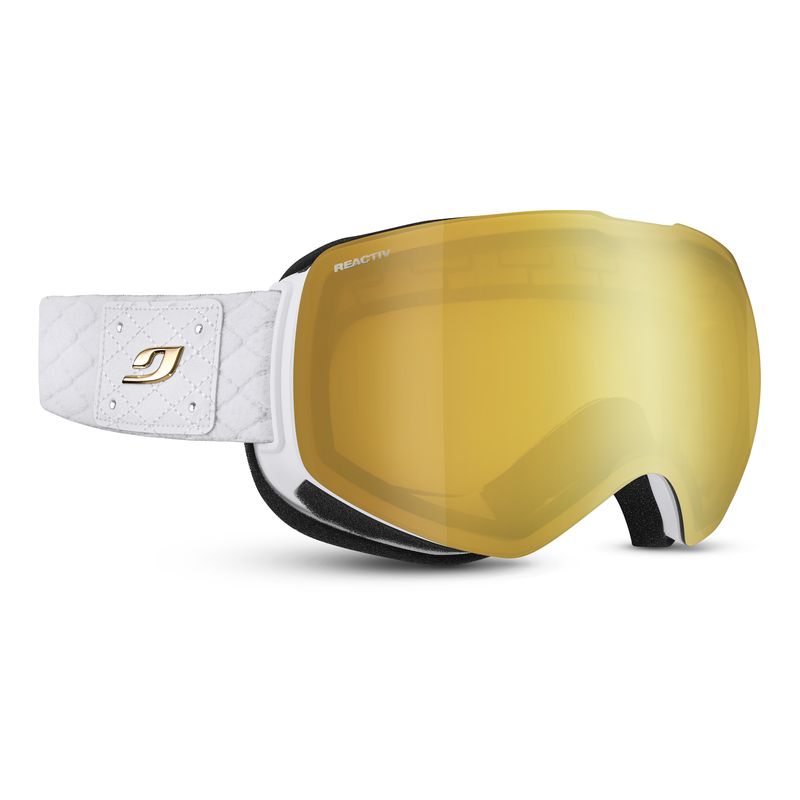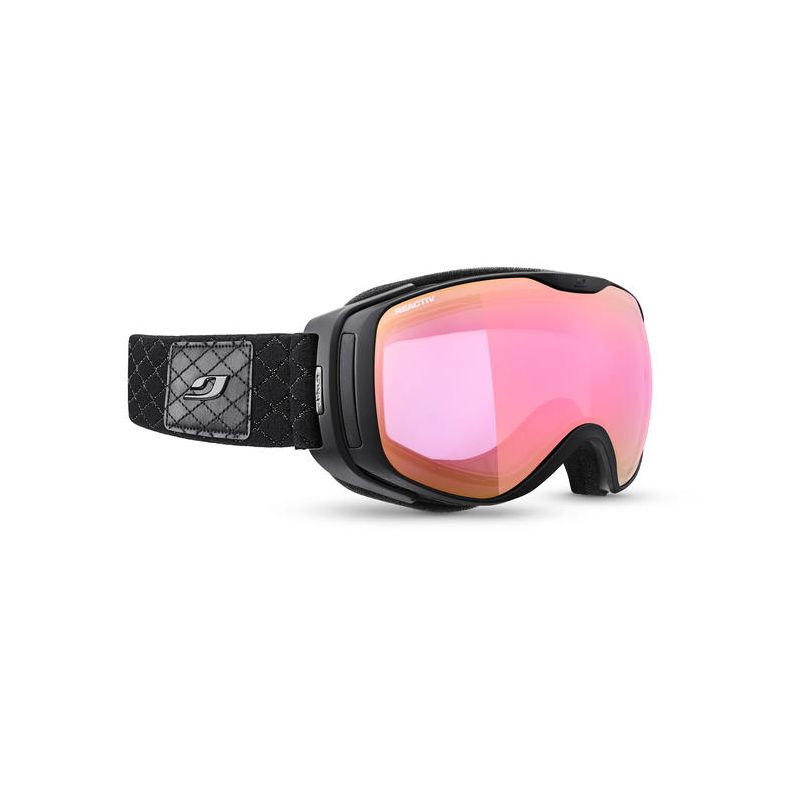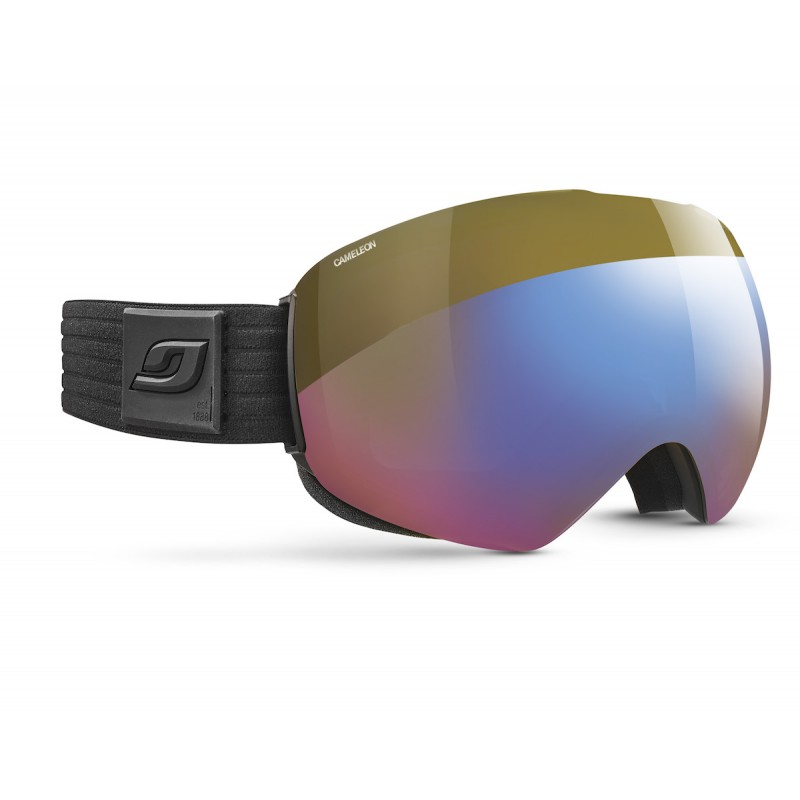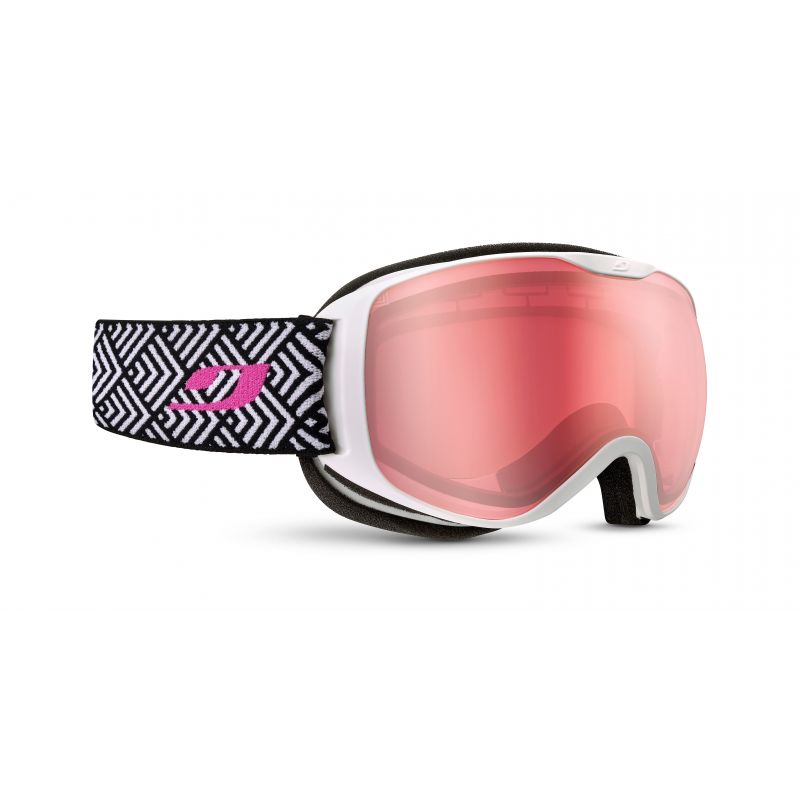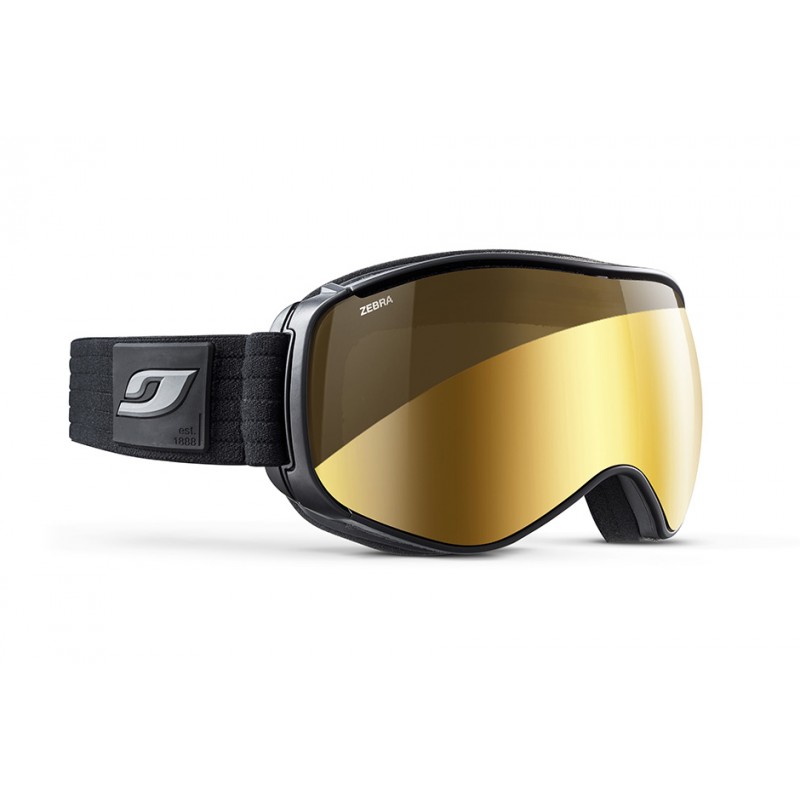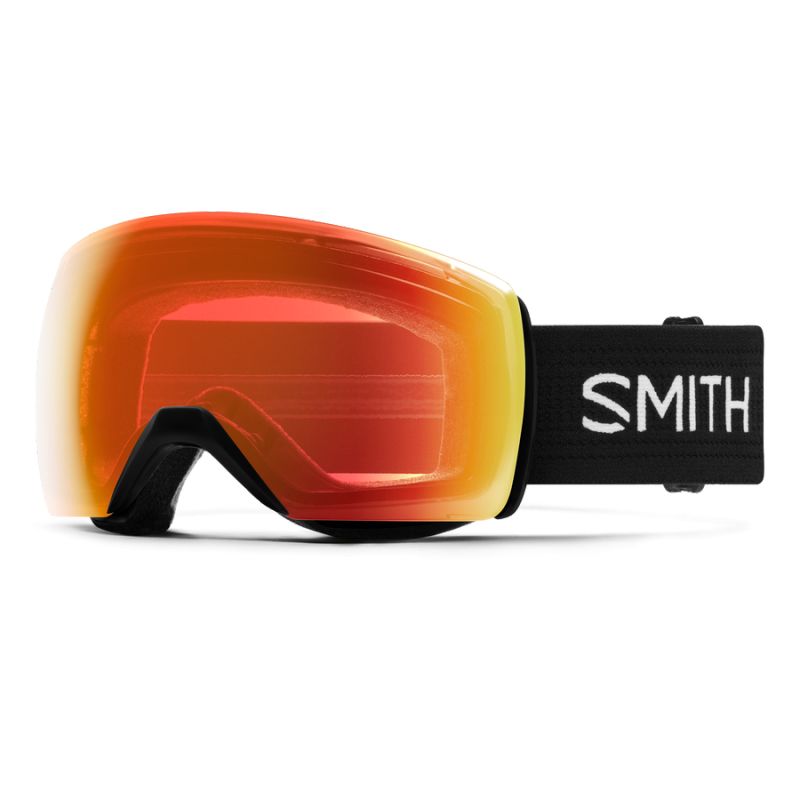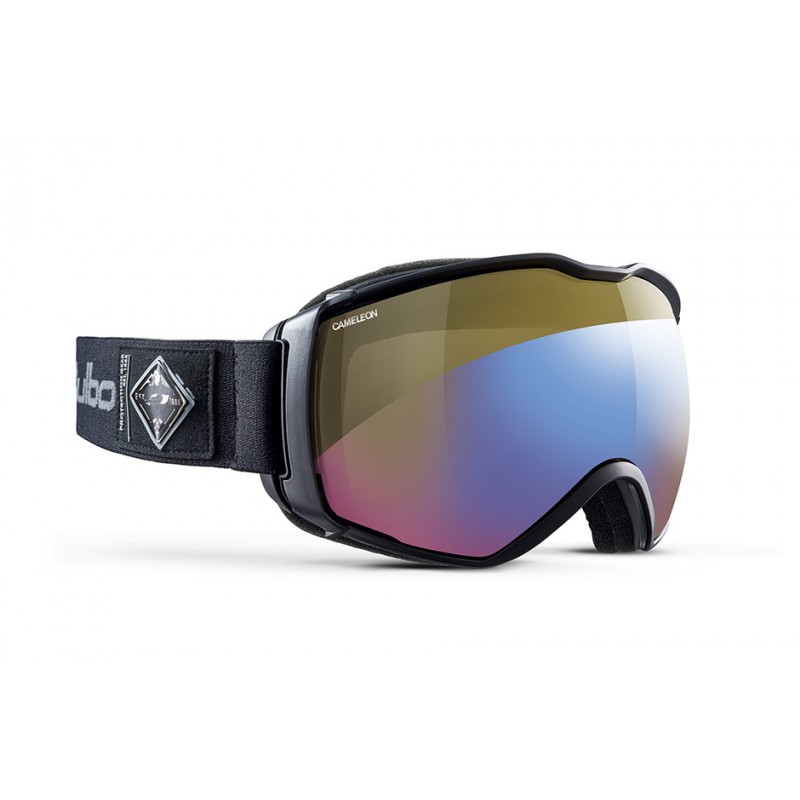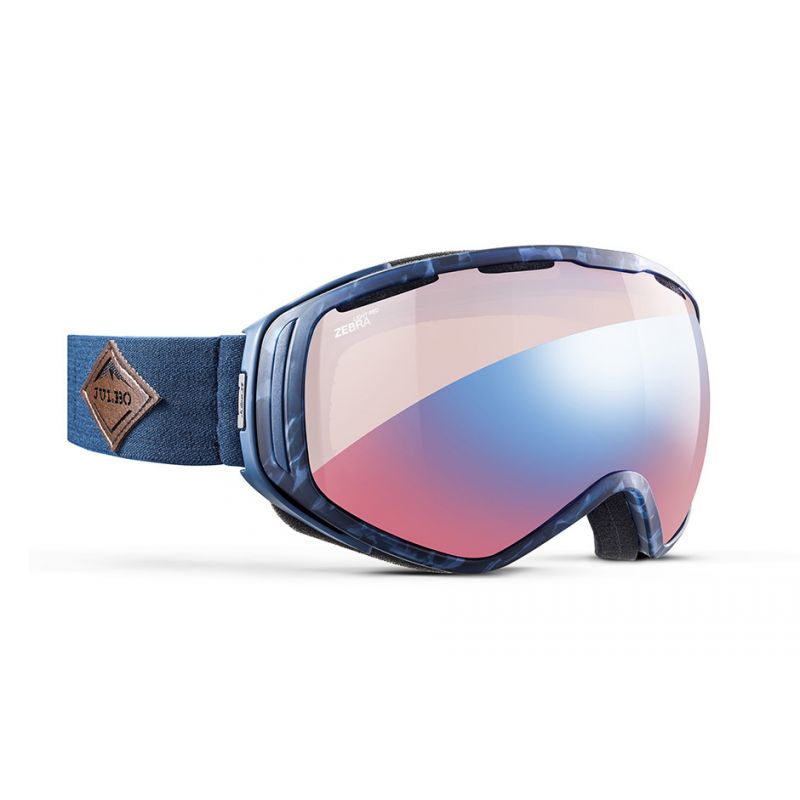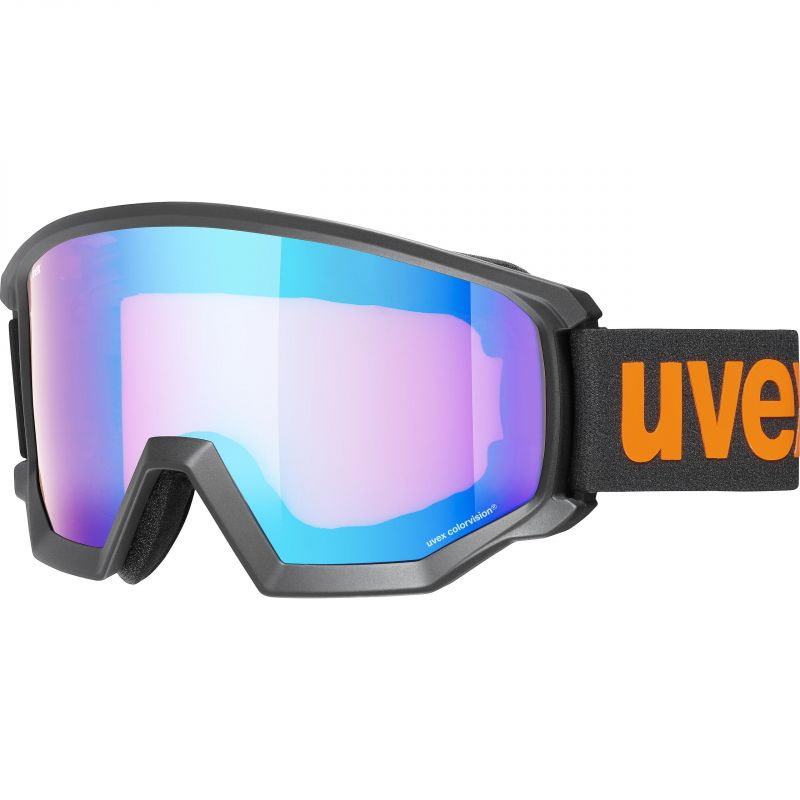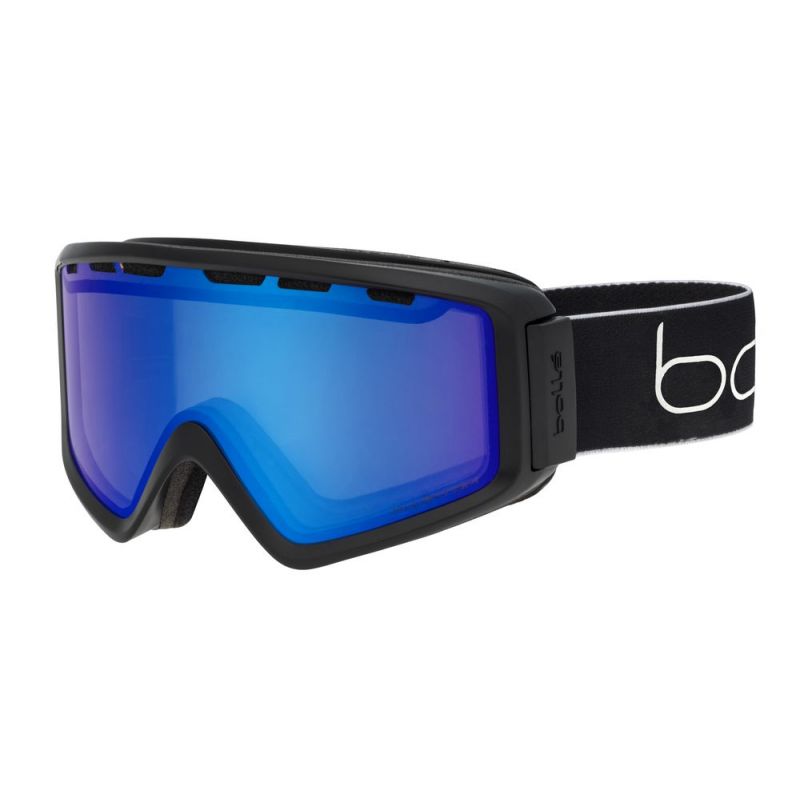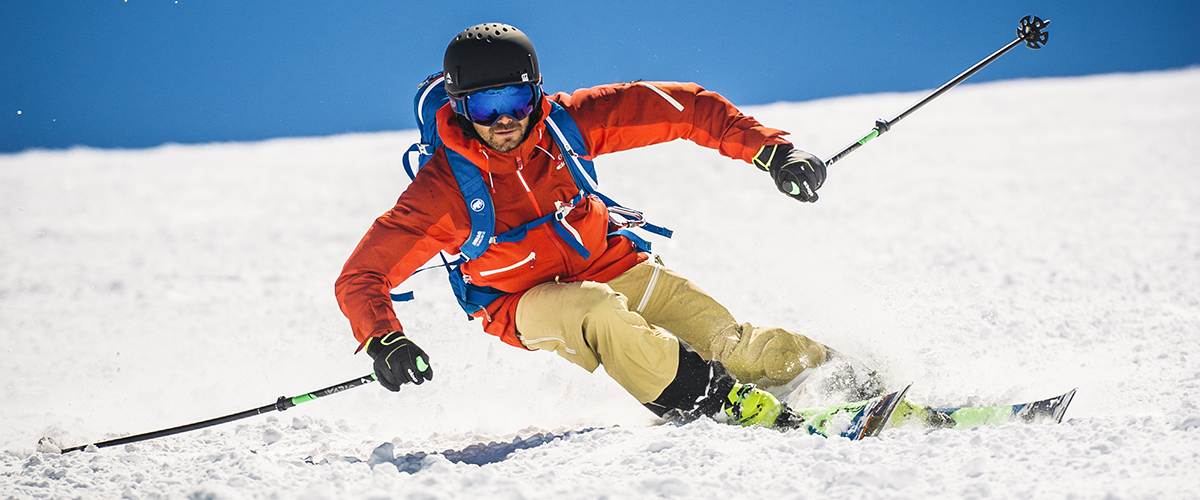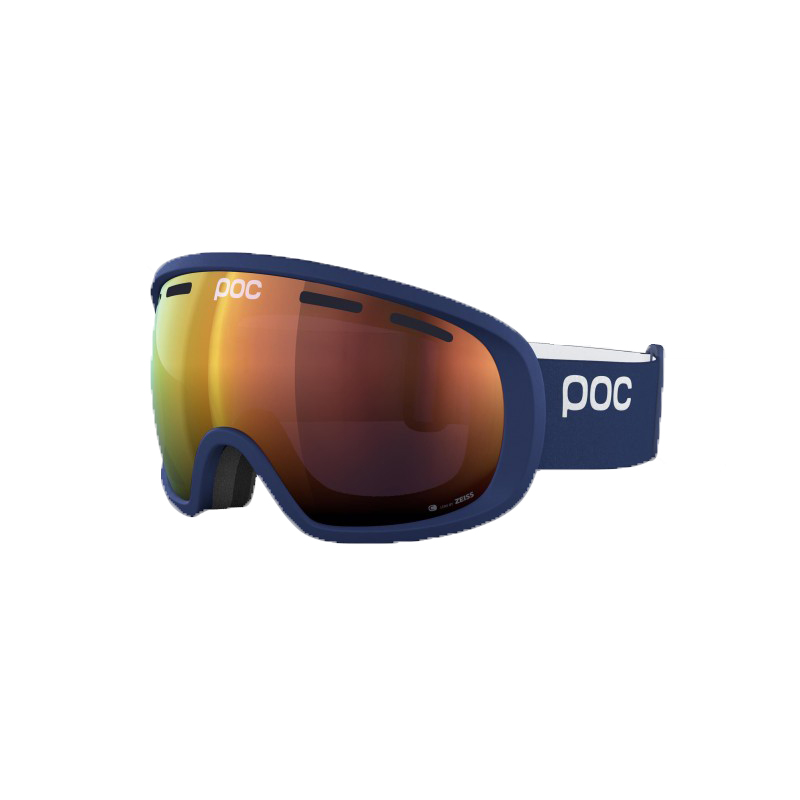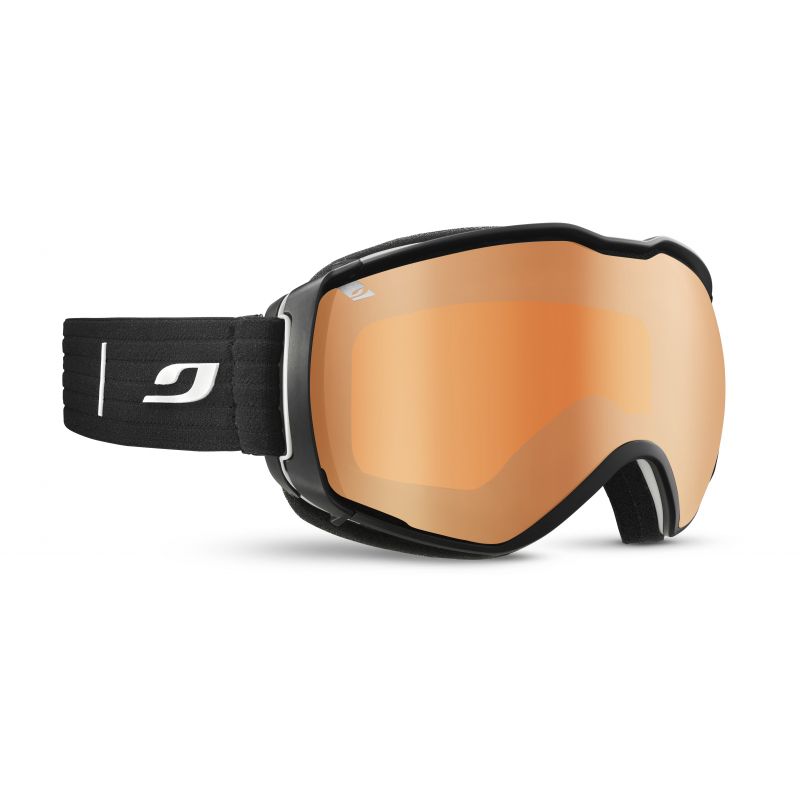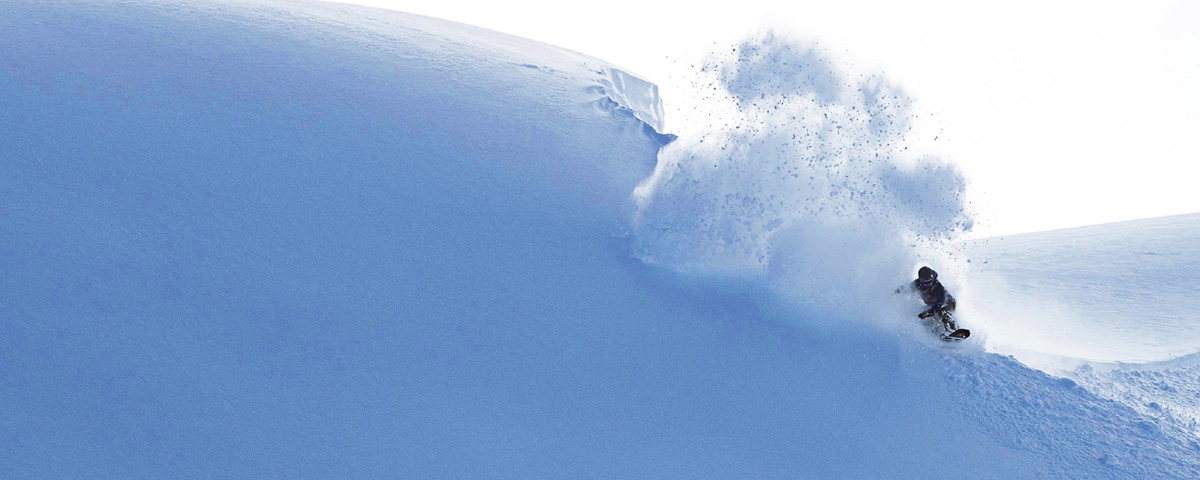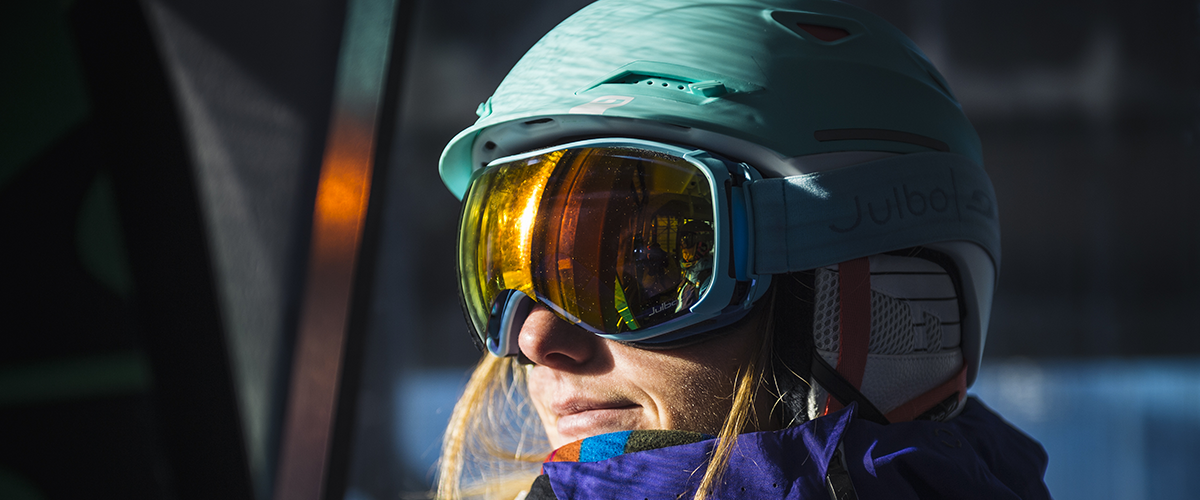We feel that you are on the starting blocks with the arrival of tons of powder snow on the French mountains (and we hope it will last until December!). After the ski helmets, it's the turn of the ski goggles! Photochromic screen, polarized screen, different categories, tinted and treated lenses…: does that not speak to you too much?
Come on, don't panic, we explain in this article how to choose the right ski goggles! So you won't have a single excuse for not wearing a ski goggle this winter…
Why wear a ski goggle?
Fog, white day, snowstorm or bright sunshine, we don't tell you anything, the light conditions in the mountains are quite particular and variable. Besides, you must have already experienced sunburn in the mountains in the middle of winter (come on, don't lie!).
So it's true, we like to have the traces of the ski mask or ski goggles on our face to show off with our colleagues when we return from the weekend, but this highlights the importance of protecting our eyes with a ski mask in the mountains in winter.
Did you know that solar radiation increases on average by 10% every 1000 meters and that snow reflects between 80% and 90% of the radiation? No wonder you're dazzled when you don't have a ski goggle on your nose!
The worst situation is to believe that you are protected by the sun's rays on an overcast day or when a thick fog surrounds you! The radiation is, in fact, much more intense because the clouds do not filter the harmful radiation from the sun, while the fog allows 50% of the radiation to pass. In addition, if you do not see the tract correctly because you are dazzled, this increases the risk of falls and accidents, sometimes serious.
In addition to protecting the eyes from the reflection of snow and light radiation, ski goggles are also useful to protect you from wind and cold. Those who have already gone down a slope without a ski mask, you will not tell us that in the end you were not crying at the bottom! The biting cold that rips you off, with the wind, icy tears, we could do without!
Last reason to wear a ski goggle: to avoid any unwanted foreign bodies that could get lodged in your little eye. Tree bark, trunks, stones or rocks are all obstacles that you may encounter on the ground. Not to mention the fact that you can hurt yourself or another skier: I think that a black eye (or even worse, but we prefer not to think about it) is not the ultimate experience that you want to live on skis.
In short, as you will have understood, the ski goggle is therefore used to protect you from the many potential risks associated with skiing at high altitude and will bring you great comfort to live memorable adventures.
➤ Women's Ski & Snowboard Goggles - Shop
➤ Men's Ski & Snowboard Goggles - Shop
Choosing the right ski goggles: choose the category and lens color that suits your practice
Well now that you know how important it is to wear a ski goggle, we're getting into the heart of the matter a little more.
First of all, before even starting the subject of ski goggle size, foam or ventilation, let's start with the different lens categories (and lens tints) offered on the market as well as the different screens that exist.
It's not necessarily the first thing you'll look at (design isn't everything!), nevertheless they are part of the first criteria for choosing a ski goggle adapted to your practice.
1. The different lens categories
Have you ever heard “It's a category 3 goggle” or “Which category of protection do you want for your ski goggle?” without knowing what that meant?
Be aware that the UV radiation protection index (categories) and the tint of the lens against glare are the two elements of a mask that contribute to eye protection. But how do you know which ski goggle color to decide?
There are 4 main categories to classify ski goggles. These categories allow you to choose lenses adapted to your practice and your level that correspond to your frequency of use. The category of a lens depends on the amount of light (transmission rate) that passes through it.
Thus, ski goggles are divided into 4 main categories, depending on the light and weather conditions when you are in the mountains:
- Category 1 ski goggles (light filtered between 20 and 57%): these are ski goggles for bad weather, suitable for skiing in very low light or when the weather is very degraded (snow, fog, wind, rain)
- Category 2 ski goggles (light filtered between 57 and 82%): these ski goggles can be worn when the sun is weak, especially when the weather is unstable, alternating between sunshine and cloudy periods. Category 2 goggles are often considered the best ski goggles for all mixed weather.
- Category 3 ski goggles (light filtered between 82 and 92%): this category of protection allows you to ski comfortably in sunny weather
- Category 4 ski goggles (light filtered over 92%): if you have the chance to ski in bright sunshine and therefore in intense light, category 4 goggles are best suited!
2. Goggle photochromic ski goggles or polarized ski goggles: what's the difference?
You then say to yourself, which ski goggle to choose if they announce a little sun in the morning and fog in the afternoon? How many screens should you take with you? Will my ski goggle not be protective enough?
Rest assured, if you ski a big week once a year in the mountains, your eyes will not be damaged in the space of a few hours. Your ski mask in category 2 or 3 will do perfectly for the day (knowing that from one day to another, the weather can completely change). On the other hand, if you are lucky enough to be able to ride every weekend and in all weathers, it may be useful to opt for a photochromic ski goggle!
Photochromic ski goggles
Ski goggles with photochromic lens, in particular those developed by the Julbo brand, offer a very wide range of protection, whatever the external conditions, because the lens adapts to the light outside. In fact, with a Julbo photochromic lens, your goggle goes from category 2 to category 4 in just 22 seconds. A significant time saving compared to interchangeable screens and much more practical!
These photochromic screens guarantee maximum protection against UV rays while offering you great optical quality during your rides. You can move from one side of the mountain to another, your photochromic ski goggle adapts in seconds to the different light. Thus, if it is sunny, the screen of the photochromic ski goggle darkens, if clouds appear, the screen brightens almost instantly.
You can find, for example, photochromic screens in the ranges of the Julbo, Bollé, Smith or Scott brands. Julbo, with its photochromic Reactiv range, nevertheless remains the best because its adaptation technology is the fastest currently on the market.
To better understand how photochromic ski goggles work, we invite you to view the Julbo video below, showing live the color changes depending on the ambient light.
➤ Photochromic Ski Goggles - Shop
Polarized ski goggles
Ski goggles are generally all equipped with a polarizing screen. Polarized lenses guarantee more effective protection and greater comfort when the sun is blazing because they effectively protect against glare. Indeed, polarized lenses act as an anti-glare filter and fight against the reflections of light reflected on snow. They therefore allow a perfect reading of the reliefs (the latter are more contrasted) and to quickly distinguish the snow and the patches of ice.
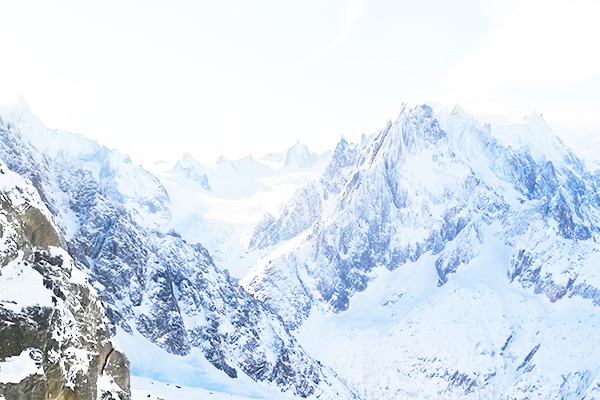 | 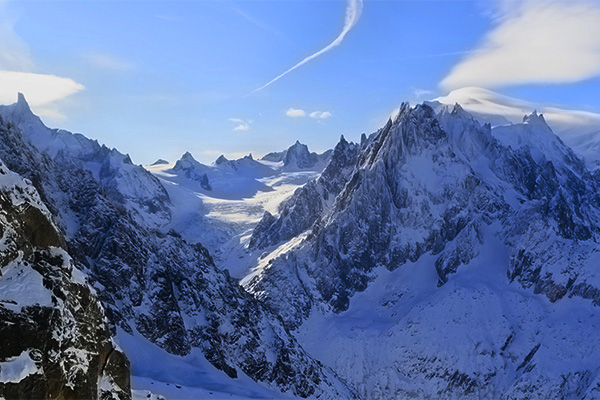 |
| Vision with a non polarized ski mask | Vision with polarized ski mask |
Photochromic lenses and polarized lenses can of course be combined, it is quite possible to find goggles on the market ski boot with polarized photochromic screen.
Let's once again take the example of a ski goggle from the Julbo brand. The Skydome ski goggle is a photochromic and polarizing goggle at the same time, allowing you to go from a category 2 to a category 4 in a few moments. This category of lenses is particularly useful for going from one extreme situation to another, going for example from a north face to a south face for example, with therefore large variations in luminosity. |
3. The different colors and treatments of glass screen
Now let's move on to the tints of the glasses. Pink, yellow, red, green, brown, grey: there are many that have a direct impact on the comfort of your sight, by accentuating or not the reliefs for example. It's very simple, the darker the tint of your lens, the more it protects you from the light.
If we take the logical sequence with the categories, when you are moving in the mountains in the fog, on a white day or when the sky is overcast, you need a clear lens tint (in shades of orange, yellow or pink). These tints will allow you to better distinguish the relief by increasing the contrasts.
On the contrary, if you practice skiing mainly in sunny weather, with intense light, you need a dark lens tint (in shades of brown, maroon or gray), for ideal comfort for the view.
➤ Ski Goggles - Shop
Choosing the right ski goggles: choose the right frame!
Then, you will often hear about spherical or cylindrical ski goggles, or even rimless or OTG (Over the glasses) ski goggles. Are you lost there too? We have therefore dissected the appellations for you to better navigate your choice.
1. Spherical screens vs. Cylindrical visors: choose the right shape for your visor
Cylindrical visors
Spherical lenses
2. Over the glasses, frameless, double screen: choose the right frame
Ski goggles OTG (Over the glasses)
Ski goggles over the glasses (OTG), as you will have understood, are intended for wearers of eyeglasses who would not tolerate contact lenses. Scott, Oakley, Scott or even Julbo, many brands have included OTG goggles in their ranges of ski goggles, characterized by increased depth and special foam, allowing you to wear your glasses under the goggles, without risking a confrontation or ending up with scraped ears at the end of the day.
Significant improvements have been made to OTG ski goggles, the main ones based on the management of condensation and aeration.
We're not going to lie to you anyway, when the conditions are very humid in the mountains, eyeglasses and ski goggles is still not the best solution to effectively fight against fog.
➤ OTG Ski Goggles - Shop
Rimless ski goggles
Other format frame, rimless ski goggles (or frameless if you want to show off)! So don't worry, your ski goggle doesn't magically fit on your nose, there is of course a frame but it is more or less visible on the outside. These rimless ski goggles have a few advantages, compared to other frames, namely greater ease of interchanging lenses and less snow retention, when there is heavy powder!
Dual lens ski goggles vs. single lens ski goggles
Single lens or dual lens, that is the question! Having become the standard for ski goggles, the double screen acts like double glazing, thus preventing condensation inside the goggle and therefore the formation of fog. Indeed, the double screen takes the form of two layers of plastic, separated by an air gap between them, guaranteeing insulation inside the mask.
Be careful, if the fog manages to find a place between the two screens (due to a faulty seal for example), your ski goggles are good for the trash! So give importance to the quality of the materials used.
The only downside that a dual lens ski goggle might have would be image distortion, unlike a single lens ski goggle. On the other hand, you will have much less fogging with a double screen ski goggle!
Ski goggles with a quick lens change system
We told you about this earlier, unless you opt for a photochromic lens (whose colors adapt to the ambient light), entry and mid-level ski goggles of the range are equipped with notches on the edge allowing a frame to be clipped on. Because no one would want to buy 4 ski goggles and carry them in their bag depending on the weather and light, brands have created ski goggles with interchangeable lenses.
Thus, it is possible for you to quickly change the screen of your mask without having to change the frame with it! This solution is more expensive than the other options, but damn practical all the same!
➤ Ski Goggles - Shop
Which ski goggles to choose: overview of the technical criteria
Now that you are perfectly comfortable with the lens categories, polarized lenses, photochromic lenses, tints and frame, let's now move on to the technical criteria for choosing your ski mask.
Above all, your ski goggles must meet three main criteria:
- the quality of vision
- the limitation of fogging
- the general comfort when worn with a ski helmet
1. Choosing a ski goggle adapted to your practice
Just like your skis more or less heavy, manageable and sharp depending on your practice, you will not choose a mask at 200 euros if your skiing is limited to one week in the year, with a beginner level of skiing.
You must therefore choose your ski mask according to the frequency with which you go to the ski resort. Between weekly use and occasional use, you do not need the same characteristics (longevity, adaptation to the weather, etc.)
Likewise, if you practice freeride, freestyle, backcountry, freerando or track, your requirements will not be the same, because even though you are in the mountains, you will be confronted with very different environments. Groomed or powdery track galore, patches of ice or rocks in sight, the relief is not the same either!
It is therefore important to choose a ski goggle that corresponds well to your practice and your level of skiing, otherwise you will opt for an oversized ski goggle or the reverse.
2. Choose a ski goggle that fits your size and is compatible with your helmet
When you choose your ski goggle, you will of course take into account all the criteria that we have explained to you previously, namely the protection index against UV (lens categories), the tint of your lenses and the different screen technologies (polarized, photochromic, single/double screen, OTG, etc.).
Last essential detail, you need a ski mask adapted to the morphology of your face and which is compatible with the wearing of your ski helmet. If, coupled with the last mentioned, your ski goggle presses the bridge of your nose or your eyebrows or you feel any discomfort, it means that it is either too big or too small. Try another! The shape of the ski goggle should match your face shape because goggles are higher or lower, thinner or thinner.
Some brands like Smith have developed special technologies to adapt the shape of the mask to the face of the person as much as possible. The Smith brand, for example, has developed Responsive Fit™ technology which allows you to adjust the screen and adapt it to the contour of your face. The architecture of the ski mask is very flexible latex, allowing it to adjust to the millimeter to your facial structure, thus putting an end to traces on the face.
3. Choosing a comfortable ski goggle
Last but not least, the comfort of your ski goggles, which translates into the presence of foam, a ventilation system and anti-fog treatment.
The inner foam
Single, double, triple, OTG foam… Which one to choose?
It's simple, the inner foam is in direct contact with your skin. You can imagine that the thicker it is, the more comfortable it is to wear your ski goggles. A double or triple density foam will perfectly match the shape of your face and can also better absorb shocks during your effort. Make sure there is a comfort textile on the foam finish, it will be much more pleasant in direct contact with the skin (less irritation).
Some goggles have OTG foam (like Julbo goggles for example), whose contour is thermoformed, thus guaranteeing perfect compatibility with the eyeglasses worn under the ski goggle.
Ventilation
Ventilation on your ski goggle is essential if you want to prevent it from fogging up. The different brands have developed their own technologies to promote the circulation of fresh air in their ski goggles.
The Poc Fovea Clarity ski goggle, for example, offers high-density foam padding that prevents excessive ventilation at high speeds. An anti-fog treatment avoids any discomfort when the speed decreases. |
Another example is the Superflow System developed by the Julbo brand and integrated into the Airflux goggle, which is particularly appreciated in the world of board sports. The principle is simple: you will be able to slightly deport your screen using your hands depending on the situations in which you find yourself. In the ON position (static position or approach step), you pull the screen forward, unhooking it slightly from the frame of the ski goggles to allow air to better infiltrate and evacuate fog . In the OFF position (during exercise), you press the screen against the goggle frame! |
Anti-fog treatment
In general, the lenses of ski goggles undergo high-performance treatments to manage condensation, thus preventing the appearance of fog. Each brand has developed its own technology, so it is not necessary to dwell on these treatments, which are relatively similar and at the same level of performance between the brands.
The Smith brand has developed, for example, Anti-Fog 5X technology, a technology that absorbs moisture 5 times faster and disperses it over a large surface.
The Bollé brand, meanwhile, has a P80+ anti-fog coating that disperses water molecules and reduces fogging.
How to clean your ski mask and when to change it? Is it a harmless operation?
Maybe not, surely not even because there is a good chance of seriously damaging your ski goggles and reducing its performance.
The first mistake you can make on the slopes: quickly clean your screen with your gloves or a part of your jacket. The result ? Stripes for sure!
Remember that the internal screen of your ski goggles is treated against fogging, so never use a damp cloth or try to dry it, otherwise the treatment will deteriorate, and even more fog will appear on the screen.
In good practice with your ski goggles, you should always use a microfiber cloth to clean the outside of the screen. It is important never to put products on the outside of your mask, to remove fingerprints for example. All you have to do is slightly dampen the cloth and rub without pressing the surface of the screen.
If you have fallen in the snow and the snow has entered your mask, remove it, shake it vigorously and wait patiently for the remaining water to dry. In case of fogging, we advise you to reduce your pace and gently take off the mask from your face to generate sufficient airflow.
If your ski goggle is scratched on the surface, if the fog sets in more and more quickly or it damages your face (used foam), it means it's the right time to change it! Don't wait too long either, it could ruin your day of skiing!
You now have all the keys in hand to choose your ski goggles this winter! A question or need advice? Do not hesitate to contact our team of experts by phone on the +33 (0) 1 84 67 14 24 (free call) or by sending a message to our Help Center. We will be happy to help you and answer your questions!
➤ Ski Goggles - Shop
Crédits photos : ©Julbo / ©Smith
